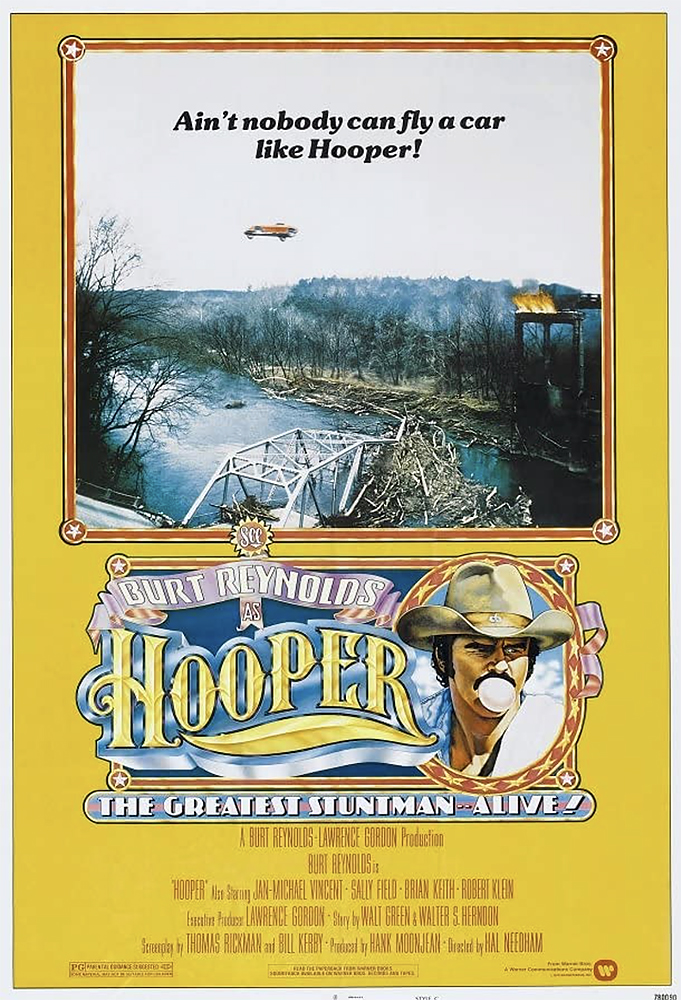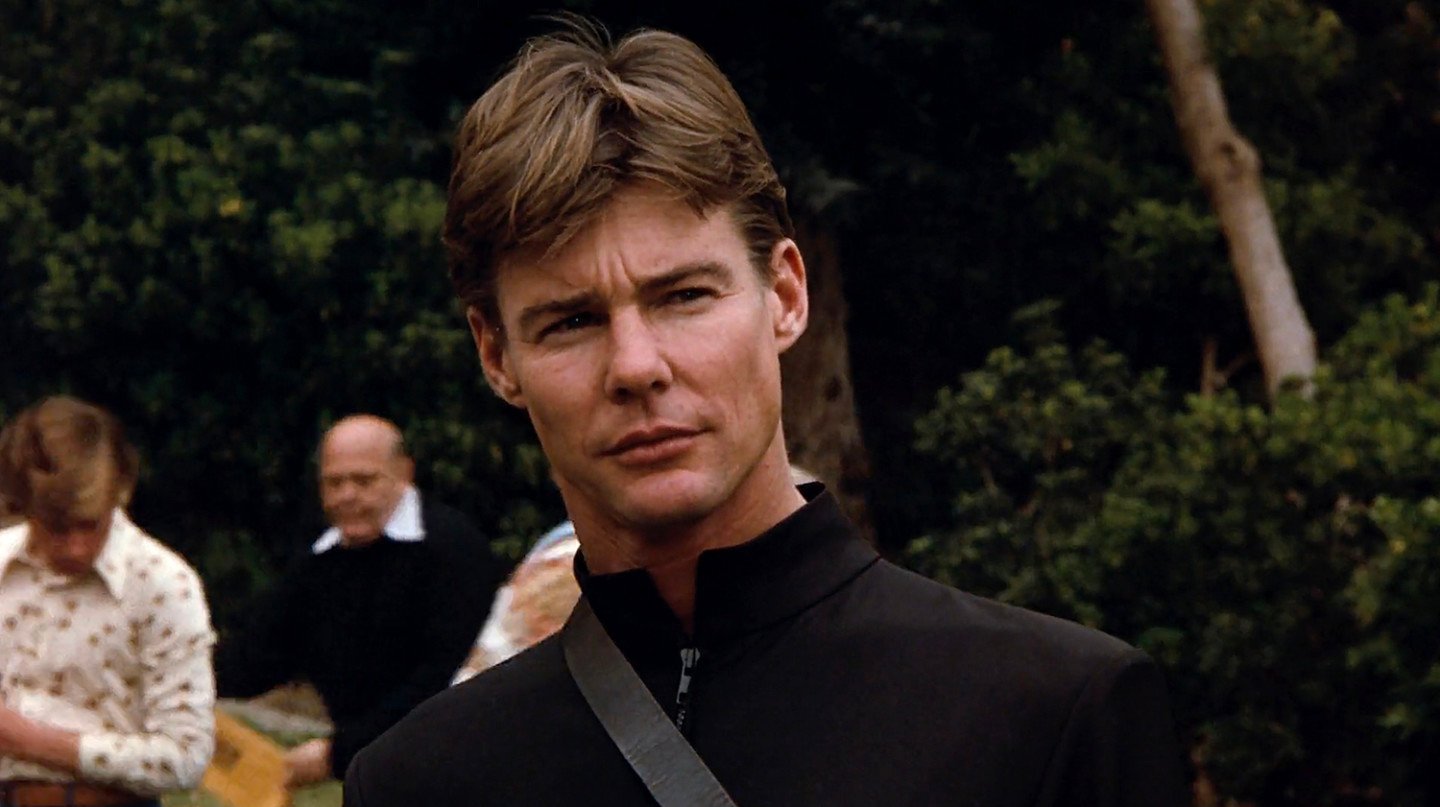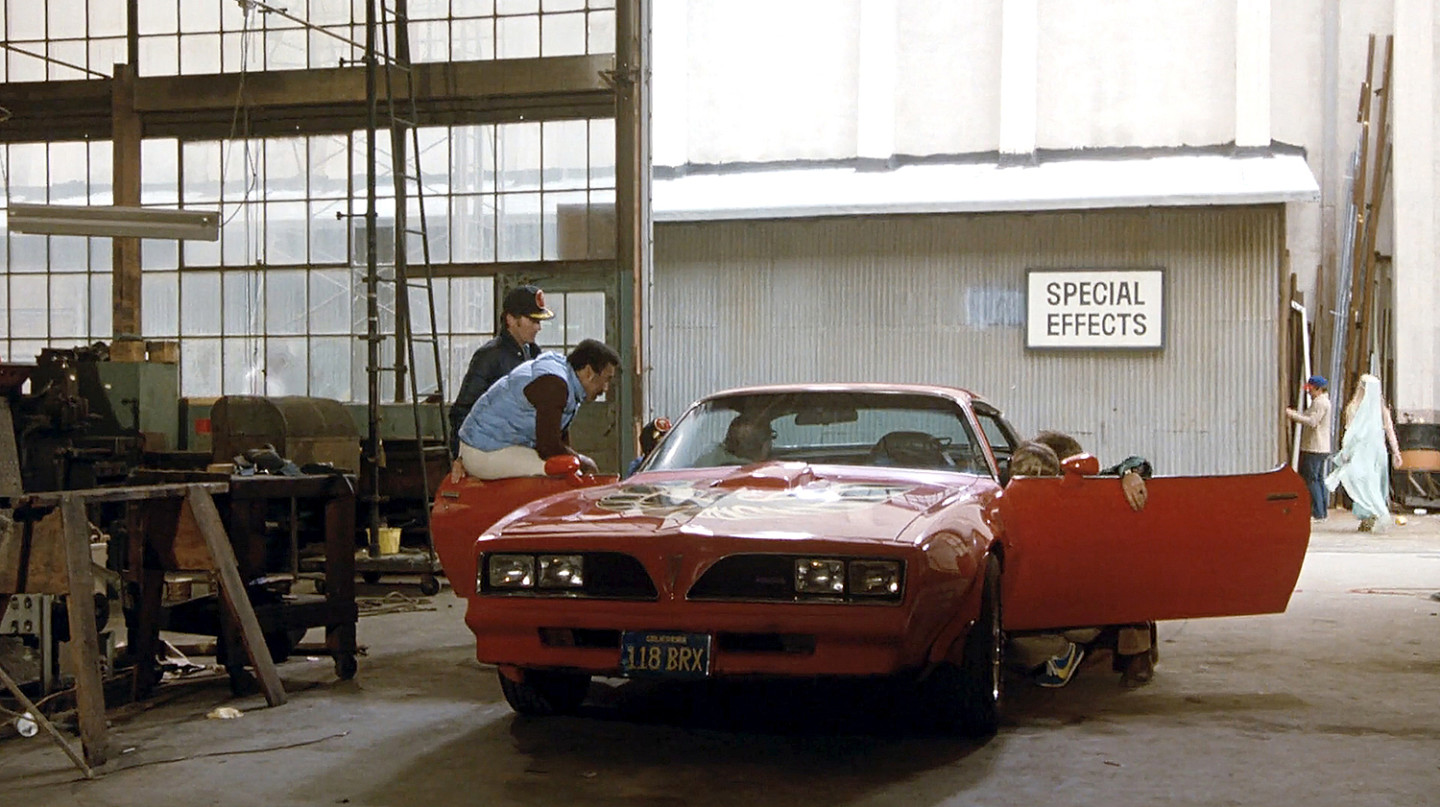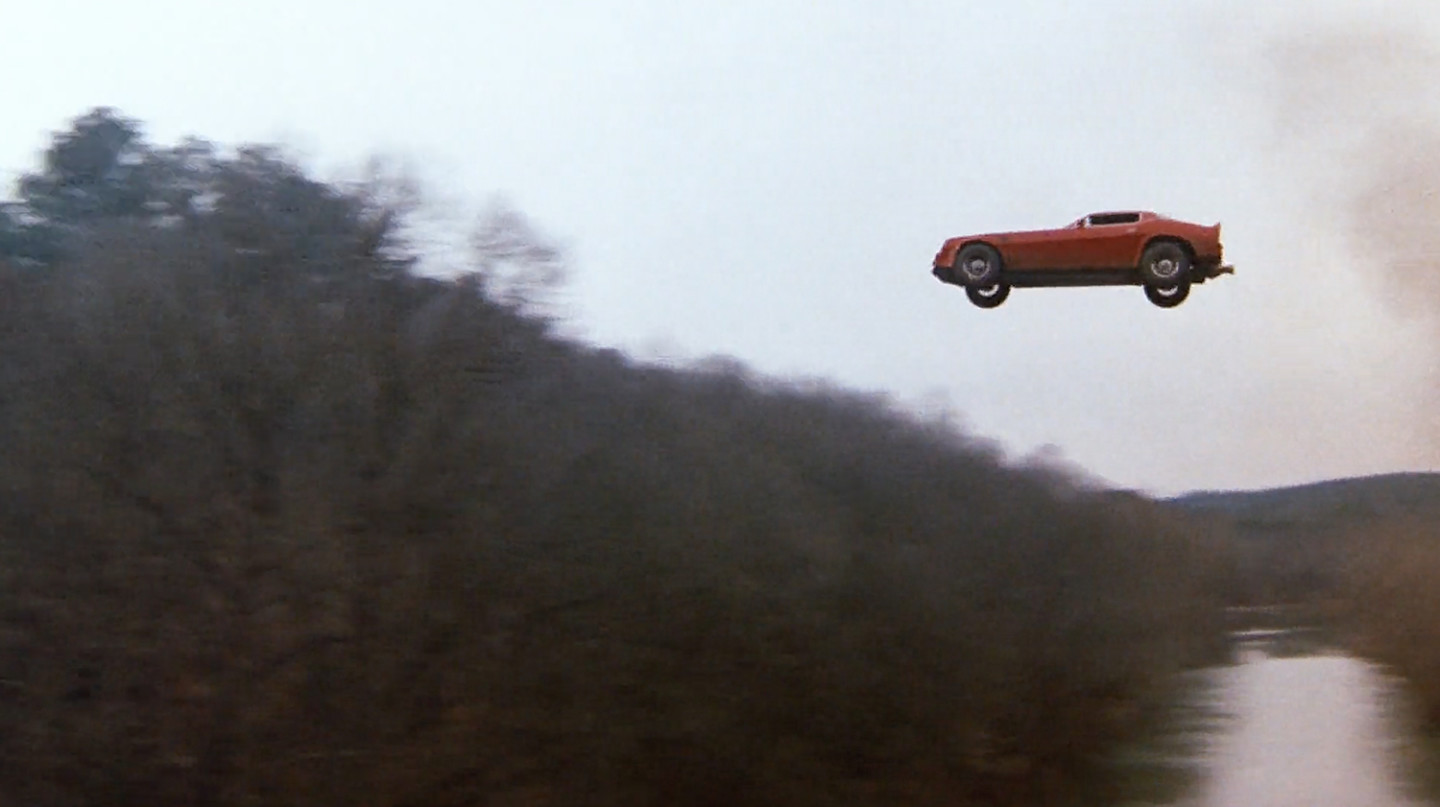In the annals of Hollywood history, a number of notable film actors became closely associated with automobiles by virtue of select roles.
There was Steve McQueen, a lifelong car and motorcycle enthusiast, whose starring turns in Bullitt, Le Mans, The Hunter, and The Thomas Crown Affair gave him his automotive bonafides.
Then there’s Paul Newman, who would establish a side career as a professional racing driver in his late forties after appearing in 1969’s Winning, a film that followed the exploits of an aspiring Indianapolis 500 entrant.
And who could forget James Garner? He became a car nut while training with Bob Bondurant in preparation for his role in the Formula 1 epic, Grand Prix, and later went on to play the Firebird-driving detective in The Rockford Files.
I could go on ad infinitum, but there is one thespian who truly rises above all others in terms of his connection to cars.
Starring in no less than seven, yes seven, films between 1973 and 1984 that celebrated the world of the internal combustion engine, the late, great Burt Reynolds was indeed the movies’ “King of Cars.”
While he is remembered most for his portrayals in the car culture classics Smokey and the Bandit and The Cannonball Run, his lesser-known 1978 film, Hooper, remains one of the best examples of the marriage between Reynolds and top-notch automotive action. What’s more, it sees him reunited with his iconic ride from Bandit, the Pontiac Trans Am.
In recognition of the 45th anniversary of this classic, I thought we’d take a deep dive look at the four-wheeled star of Hooper and examine what it did on screen. Are you with me? Cool, let’s do this!
In spite of Hooper having been produced and released after Smokey and the Bandit, its genesis actually predated it. Stuntman, turned writer and director, Hal Needham, came up with the idea to make a movie that honored his fellow stunt workers in 1974, and pitched it to his friend, Burt Reynolds, without a script. Reynolds, liking what he heard, immediately agreed to do the picture at a reduced rate, since it would no doubt be of too low a budget to afford his normal million-dollar fee.
Initially titled The Stuntman, the project made the rounds at all the studios but failed to find a home, and was shelved in 1976, with Needham and Reynolds then turning their attention to Bandit.
After Smokey and the Bandit took in a staggering $127 million dollars at the box office on its way to becoming the second highest-grossing film of 1977 after Star Wars, suddenly The Stuntman was once again a hot property. Warner Brothers ultimately financed the project, which saw a script by Thomas Rickman and Bill Kerby land in the hands of Hal Needham to direct.

Hooper saw the reuniting of Smokey and the Bandit stars Burt Reynolds and Sally Field. (Photo courtesy of Warner Brothers.)
In addition to the reteaming of Needham and Reynolds, Reynolds’ real-life girlfriend and Bandit co-star, Sally Field, was cast as the female lead. Rounding out the ensemble was Jan-Michael Vincent, Brian Keith, Adam West, Robert Klein, James Best, and footballer Terry Bradshaw.
A character study as opposed to a plot-driven narrative, Hooper focuses on the waning career of Hollywood’s greatest stuntman, Sonny Hooper (Reynolds). Decades of on-set physical abuse had taken their toll on him, and he is now faced with a struggle between his desire to keep working, and the inability of his body to keep up.
Complicating things is his girlfriend (Field), who disapproves of him continuing, and Ski (Vincent), a young up-and-coming stuntman who Hooper wishes to mentor. Capitulating to the wishes of his significant other and the aches of his body, Hooper decides to throw in the towel, but only after performing the world’s greatest stunt with Ski.
This spectacle involves the two men racing through a town, avoiding massive explosions and collapsing structures, as a cinematic earthquake ravages the area, culminating in the two jumping their car across a vast canyon.
The vehicle they will attempt this in is a highly modified, rocket-propelled, 1978 Pontiac Trans Am.
Unlike the iconic, dusky TA with gold accents that was Burt’s whip in Smokey and the Bandit and its sequels, Hooper’s Trans Am is exponentially bolder, draped in searing Mayan Red paint with a black and gold screaming chicken on the hood.
Outside, the car looks mostly stock, save for a set of polished aluminum mag wheels replacing the OEM “snowflakes,” more robust, white letter Goodyear rubber, and a rocket exhaust nozzle poking out of the rear valance.
Inside, the car is most assuredly not stock. The rear seats have been removed, and a massive rocket propulsion system sits in their place. Controlling it are a host of gauges, knobs, and warning lights that have supplanted the traditional switchgear in the center stack.

The controls for the rocket engine on the Trans Am’s center stack. (Photo courtesy of Warner Brothers.)
Under the hood, the hero car sported the rather milquetoast, Oldsmobile-sourced, L80 403 cubic-inch V8 that was mandated for California Trans Ams at the time. Featuring a 4.35 x 3.38-inch bore and stroke, an 8.0:1 compression ratio, hydraulic lifters, and a four-barrel carburetor, the 403 sadly only put out 185 horsepower, but a somewhat more respectable 320 lb-ft of twist. Backing this was a standard GM Turbo Hydra-Matic 350 three-speed automatic that sent power to an 8.5-inch, 10-bolt differential.
Helping the Trans Am cope with some fairly punishing stunts was the factory’s optional WS6 High Performance Package. Replacing the standard leaf springs with 25 lbs-in stiffer units, the package also included 1.25-inch front and .75-inch anti-sway bars with polyurethane bushings, tighter-valved shock absorbers, and a quick-ratio 14.0:1 steering box.
In the climactic stunt sequence at the movie’s end, the spurs are put to the Pontiac. It performs numerous smokey burnouts, high-speed J-turns, and power slides. Most impressive is the shot where it races under a gigantic, collapsing smokestack just in time. Good stuff.
The final stunt, the one the film is noted for, had absolutely nothing to do with the hero car though.
In the sequence, Hooper, in the passenger seat, and Ski, behind the wheel, line the Trans Am up to jump across a canyon just after a suspension bridge collapses.
Having doubts they can make it, Hooper and Ski nonetheless psyche themselves up and go for it. The rocket ignites, the car races towards the canyon, and then after an abrupt edit, we see a vehicle that is clearly NOT a Pontiac Trans Am making the spectacular jump, rocket engine emitting a plume of smoke behind it.
So what gives?
Buddy Joe Hooker, one of the most heralded stunt performers in the business, actually performed the 325-foot jump in a jet-powered drag car, as it was impossible for a Trans Am, with its poor weight distribution and brick-like aerodynamics, to execute it, even with rocket propulsion. Yup, all of that convincing gear we saw onboard the Trans Am – the rocket engine, the exhaust nozzle, the controls – were just fake movie props.
Though an attempt was made to make the jet car look somewhat like the Trans Am – mostly by painting its elongated bodywork Mayan Red – even a cursory glance at the shot makes it clear that it was not a horse from Pontiac’s stable. I assume that movie audiences weren’t as discerning in 1978, because no one, critics included, seemed to be perturbed by it back in the day. I myself must admit that knowing a man actually performed this world record-setting endeavor helps ameliorate the shenanigans, as the moment is really something to behold.
As an aside, the majority of the earthquake destruction sequence was filmed at the Northington General Hospital, an abandoned World War II military facility in Tuscaloosa, Alabama that was set to be razed. The jet car jump was likewise filmed in Alabama, over the Locust Fork River near Graysville, whose suspension bridge needed demolishing too after structural defects were detected.
When filming had wrapped, the Trans Am was repossessed by General Motors, which put the car on display at the 1978 Chicago and Miami auto shows to help promote the movie and their Trans Am model.
After this, the car vanished, never to be seen again. It was most likely crushed, as the rough treatment at the hands of the stunt drivers likely made the car unsafe for future use.
Subsequent to the film’s release, Burt Reynolds had a car built for himself that was an extremely faithful recreation of the original. It remained in his private collection until his passing in 2018, whereupon it was sold at the Barrett-Jackson auction later that year for $88,000.
A fitting price for the closest thing to Hooper and Ski’s iconic chariot, don’t you think?











